Sony VAIO VGN-TZ31MN – Ultra-Portable Notebook Review
Sony VAIO VGN-TZ31MN – Ultra-Portable Notebook
Sony updates its ultra-desirable TZ range - time to get your credit card out!
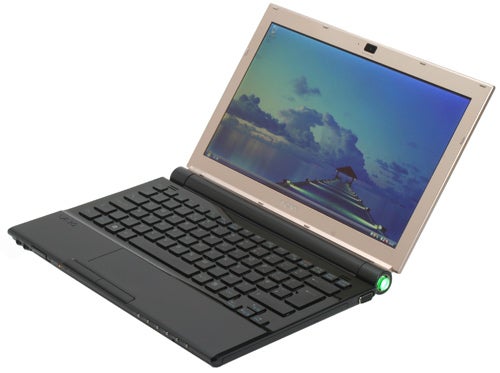
Verdict
Key Specifications
- Review Price: £1361.82
About a year ago I reviewed the Sony VAIO VGN-TZ11MN and pretty much thought it was the best ultra-portable notebook that money could buy. That opinion held strong, so much so that the TZ11MN walked away with the Best Notebook 2007 award at the end of the year. Now I have the VAIO VGN-TZ31MN in front of me, and it’s time to see whether Sony can hold onto that crown amidst ever tougher competition.
The most high profile competition to hit the market has to be Apple’s MacBook Air, but I don’t really think Apple’s svelte attack on the ultra-portable market is much to worry about. Basically, the MacBook Air is larger than Sony’s TZ series, but has no integrated optical drive, only one USB port, a lower resolution (although physically larger) screen and no wired Ethernet connection. Although I’m sure that everyone who has bought a MacBook Air considers it a sound investment by virtue of how “cool” they think they look while surfing the web in Starbucks!
More of a threat to Sony’s dominance of the ultra-portable market is Lenovo’s X300, which looks set to give the TZ a run for its money. I’ll be publishing a full review of the X300 next week and detailing how it compares to the TZ31MN, so check back for the full low down.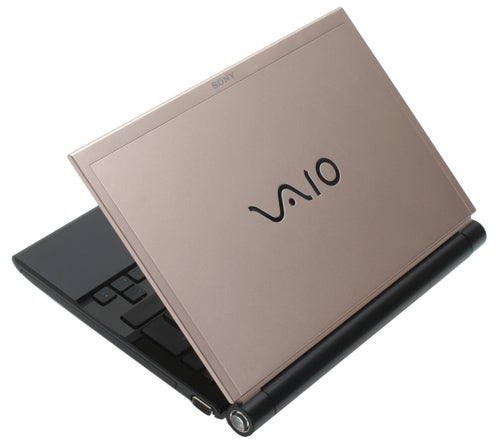
On the surface the TZ31MN looks identical to the TZ11MN that I reviewed a year ago, but believe me when I say that this isn’t a bad thing. The VAIO TZ series really does represent the pinnacle of notebook design right now. The form factor is perfect, the finish is first rate and the design stylish – and the fact that the TZ is essentially an evolution of the VAIO TX series is nothing to worry about either, since the TX machines were also head and shoulders above the competition at the time.
Sony quotes a weight of 1.19kg, and that’s exactly what the TR scales reported when we placed the TZ31MN on them. This makes the TZ31MN a very light notebook and, although it’s not as light as the Toshiba R500, it also doesn’t feel like it’s made of paper. With dimensions of 277 x 199 x 29mm (WxDxH) it’s incredibly svelte as well as light – in fact every time I see a TZ series VAIO it amazes me that Sony has managed to squeeze so much into such a small case.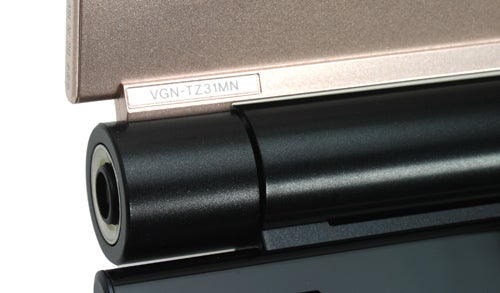
Lifting the lid reveals the wafer-thin screen that has become a trademark feature on Sony’s ultra-portable machines. Sony pioneered the use of LED backlights in its ultra-portable notebooks, and despite the fact that much of the competition is doing the same thing now, none of them can match the impression that the screens on the TZ series make. It’s not just the thin and light nature of the screen on the TZ31MN that makes it so good, it’s also about the best looking notebook display out there.
The combination of Sony’s experience with LED backlighting and the X-Black high contrast coating on the screen really does make this display a joy to behold. It’s hard to describe how vivid and bright the colours are, while the black levels are way beyond what anyone could realistically expect from a notebook display. These attributes lend themselves very well to watching video, and it has to be said that the TZ31MN would make a superb companion on a long haul flight – load it up with some of your favourite TV shows, or even carry a couple of DVD movies with you and you’ll be entertained for hours – over four hours to be precise.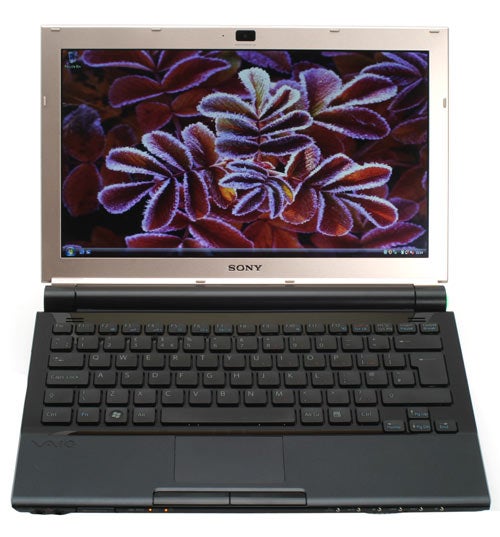
But the screen on the TZ31MN has a lot more going for it than just great video playback. Most notebooks with 12.1, 13.3 and even some with 15.4in screens sport a native resolution of 1,280 x 800, which is perfectly acceptable for a 12.1in, reasonable for a 13.3in and woefully disappointing on a 15.4in notebook. But the TZ31MN has an 11.1in screen with a native resolution of 1,366 x 768, which means that it has more desktop real estate than many notebooks that are physically much larger. The high resolution also brings with it reduced pixel pitch, which makes for a pin sharp image. Put simply, the screen on this notebook is stunning.
Above the screen is an integrated webcam, in case you feel a burning need to do some video conferencing. To ensure that it’s as easy as possible to use the webcam feature, Sony has preloaded Skype onto the TZ31MN, assuming you’ve got friends who actually want to see you when you’re chatting.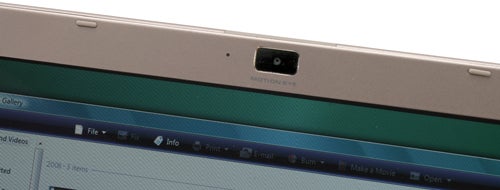
Luckily the TZ31MN isn’t a one trick pony and the outstanding screen is only one of its many appealing attributes. Despite its diminutive dimensions, the TZ31MN also has a superb keyboard, so good in fact that with the exception of Lenovo’s ThinkPads, you’d be hard pushed to find a better example. With each key completely separate from the next, the keyboard resembles a group of buttons rather than traditional keys, but that really isn’t anything to worry about. Each key is perfectly weighted, with more travel than you’d ever have thought possible considering the slim chassis.
When the TZ series launched last year many ill informed journalists accused Sony of copying Apple’s MacBook keyboard, which has a very similar design. However, Sony actually pioneered this keyboard style with the legendary VAIO X505VP – a notebook that was inconceivably thin and light, and one which Apple has recently tried to copy with its MacBook Air some four years later. 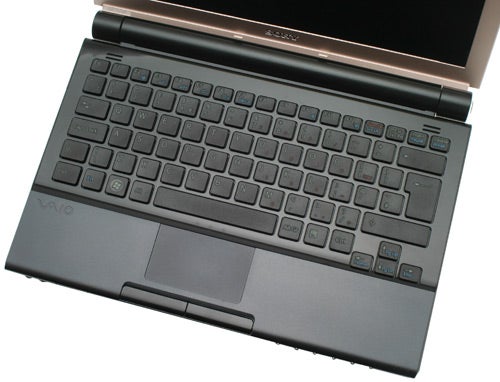
It’s amazing just how well spaced the keys are too, considering that this is an 11.1in notebook, while the layout is also spot on. The Tab, Caps Lock, Shift, Return and Backspace keys are all large, while the cursor keys are dropped away from the main keyboard for easy manipulation. And of course, the fact that Sony puts the Ctrl key in the bottom left, where it should be, will always earn brownie points.
The keyboard surround is finished in glossy black, which distinguishes the matte black keys well, as well as looking great. The wrist rest is also finished in matte black, along with the touchpad, while the buttons mounted on the very edge of the wrist rest are once again glossy. There’s no denying that Sony knows how to get the aesthetics right on a notebook, but one shouldn’t underestimate that the engineers have managed to squeeze in a complement of first rate input devices into a very small notebook – the fact that the overall effect looks great is just a bonus.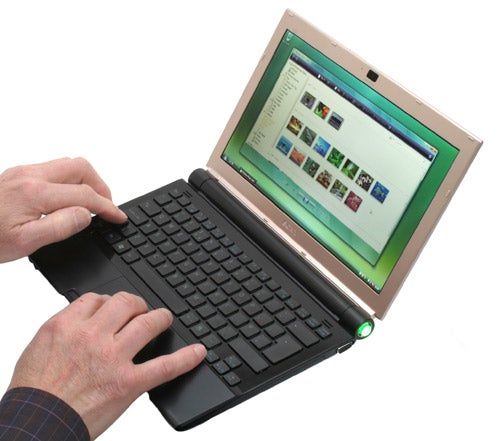
Inside, the changes are subtle but nonetheless important. Whereas the TZ11MN sported the first Intel dual core Ultra Low Voltage chip, running at 1.06GHz, the TZ31MN also comes equipped with a dual core ULV processor, but this time running at a nippier 1.2GHz. Another step up is the memory complement – whereas the TZ11MN was fitted with 1GB of RAM, Sony has seen fit (and thankfully so) to give the TZ31MN a more generous (or more realistic considering how resource hungry Vista is), 2GB of system memory. So basically, you’re now getting the same CPU and memory specification that you used to get in the top of the range VAIO VGN-TZ12VN, in the entry level MN machine. In case you were wondering, the TZ31VN will ship with a 1.33GHz Ultra Low Voltage chip – I’ll be reviewing the top-end TZ31VN very soon.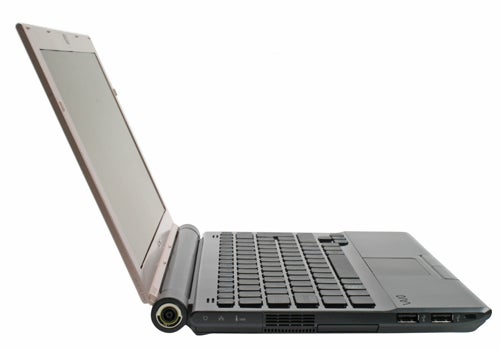
The TZ31MN benefits from a 100GB hard disk, which is, in my opinion, more than enough for an ultra-portable machine. One area that hasn’t been updated since this time last year is the motherboard chipset, with the TZ31MN still utilising the Intel 945 chipset, rather than the newer 965 backbone that was introduced with the Santa Rosa platform. As a result, the Front Side Bus is stuck at 533MHz, rather than the 800MHz seen on most modern notebooks, while the machine as a whole won’t benefit from the dynamically clockcable FSB feature that’s part of the 965 chipset.
Communications have also received a boost, with the TZ31MN supporting the Draft-N wireless standard for super-fast wireless networking, when connected to a compatible access point that is. Of course the older 802.11a,b and g wireless standards are also supported. On top of the impressive Wi-Fi support, you also get Bluetooth 2.0 with EDR, Gigabit Ethernet and a built-in 56k modem. More expensive models of the TZ31 series will also come equipped with integrated HSDPA, but that’s sadly missing from this entry level model.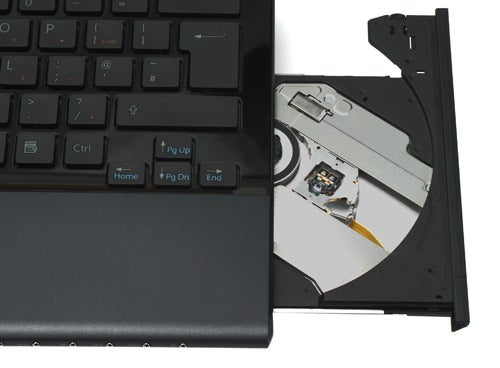
As always, Sony has managed to shoehorn a massive amount into the chassis of the TZ31MN, despite its miniscule dimensions. The right edge is dominated by the integrated DVD writer – a feature that Apple would have you believe isn’t necessary in an ultra-portable notebook, even one that’s far larger than this one. I wouldn’t be surprised if the next generation of TZ comes equipped with a Blu-ray drive, which would make it a mobile entertainment powerhouse. Also on the right is a D-SUB port for outputting to an external monitor, while the power button is mounted into the round hinge, just like on the X505.
At the front you’ll find an array of multimedia controls, highlighting the fact that the TZ31MN makes a great portable media player. Below these buttons is a hardware switch for the wireless adapters. Also on the front edge are both headphone and microphone sockets, a MemoryStick reader, an SD/MMC card reader and indicator lights for hard disk activity, MemoryStick use and battery charge. 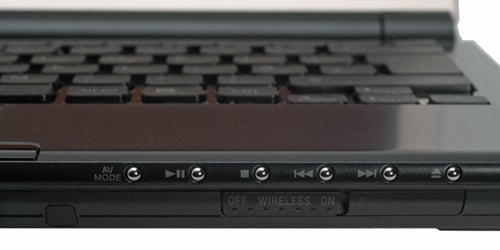
At the left edge are two USB ports and a 34mm ExpressCard slot. There’s also a pull-down plastic flap that hides a four-pin FireWire port, an Ethernet port and a modem socket. Finally, the power socket nestles in the round hinge mechanism, directly opposite where the power button is found on the right.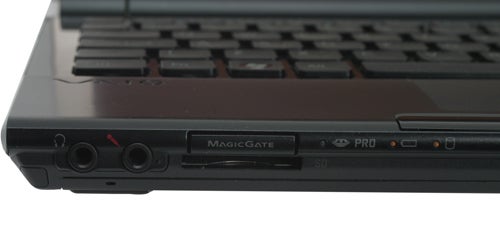
When it comes to performance, it comes as no surprise that the TZ31MN is faster than the TZ11MN was. What’s slightly surprising though, is that it managed to come in slightly faster than the TZ12VN as well, which shared pretty much identical components with this machine – obviously the TZ12VN raced ahead when it came to hard disk performance, but that’s because it was equipped with a solid state drive.
Battery life is, as always with Sony’s ultra-portable machines, very impressive. Running Mobile Mark 2007 productivity suite turned in a time of six hours and 36 minutes – not only is that an impressive time, but it’s also just over half an hour more than Sony quotes for the same test. The less intensive reader test turned in an even more impressive time of around seven hours and 29 minutes. And if you like to watch the odd DVD on your notebook, you’ll be glad to hear that you’ll get over four hours of playback on a single battery charge.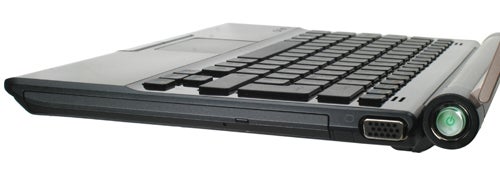
Any notebook that’s as thin and light as the TZ31MN is never going to come cheap, but at £1,361 on the street, the price isn’t as scary as it could be. Yes, you can get good notebooks that weigh under 2kg for a lot less, but if you want something that’s seriously light, with amazing battery life and still fully featured, you’re going to have to dig a little deeper. Let’s not forget that the MacBook Air isn’t much cheaper than this machine, yet it lacks some rudimentary features, so the fact that Sony has squeezed everything you could ever need (bar HSDPA) into a machine this size is still pretty mind boggling.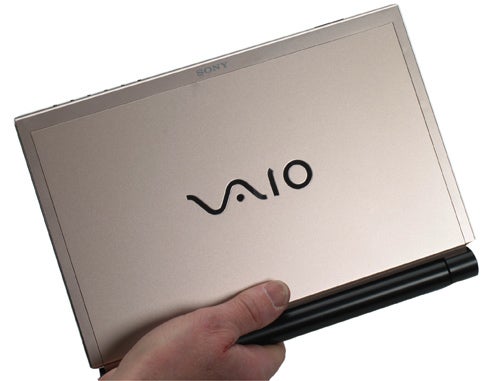
”’Verdict”’
The VAIO VGN-TZ31MN is an evolution of last year’s TZ11MN, but that’s no bad thing – Sony’s first TZ series machine did, after all, walk away with the award for best notebook of 2007 here at TrustedReviews. What the TZ31MN brings to the table is a better specification, that improves performance over the old model. It’s also good to see Draft-N Wi-Fi finally making an appearance in a TZ machine.
At £1,361 the TZ31MN isn’t cheap, but considering what you’re getting for that money, it’s not expensive either. Despite what the Apple fans may think, Sony’s TZ series notebooks are still the best ultra-portable machines you can buy.
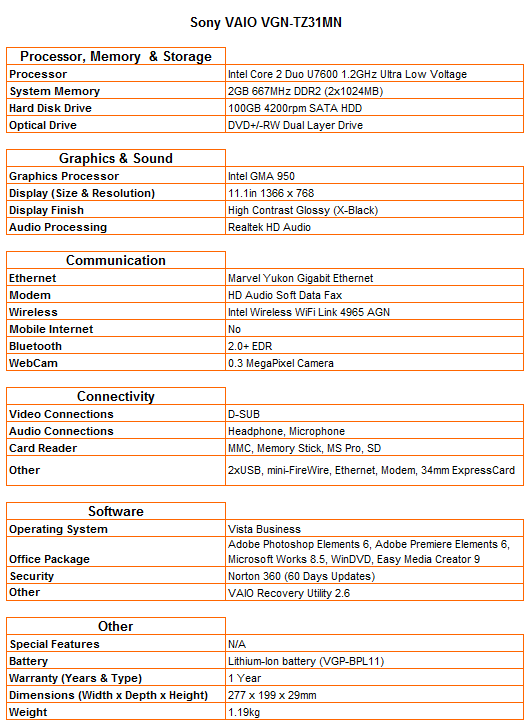
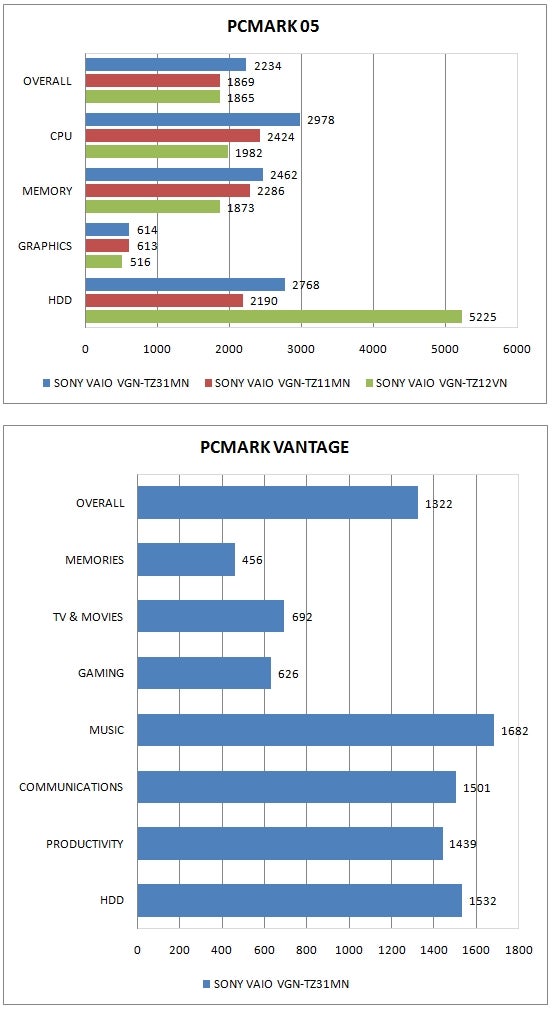
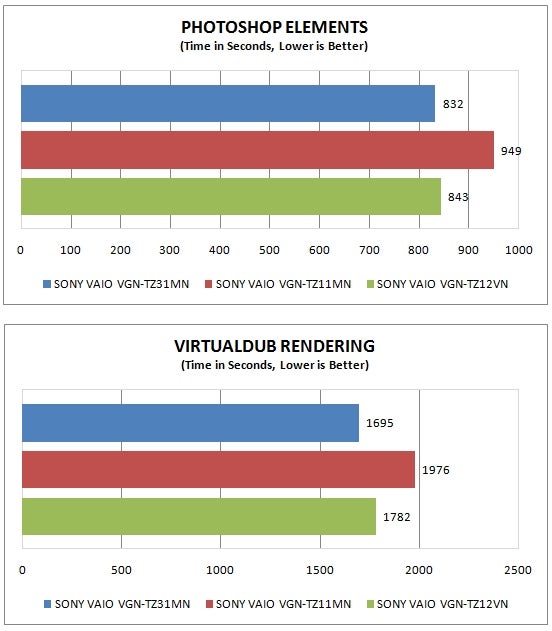
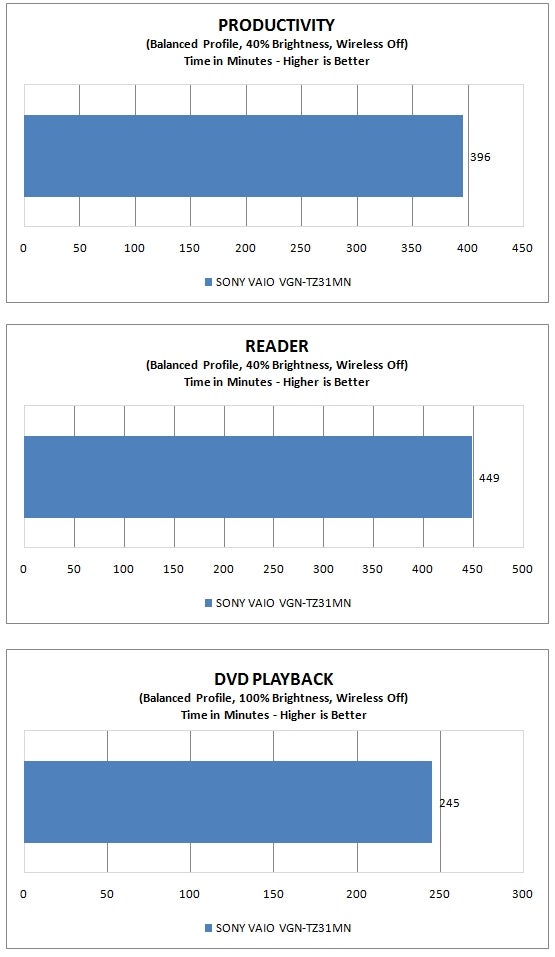
How we test laptops
Unlike other sites, we test every laptop we review thoroughly over an extended period of time. We use industry standard tests to compare features properly. We’ll always tell you what we find. We never, ever, accept money to review a product.
Trusted Score
Score in detail
-
Performance 8
-
Design 10
-
Value 9
-
Features 9

